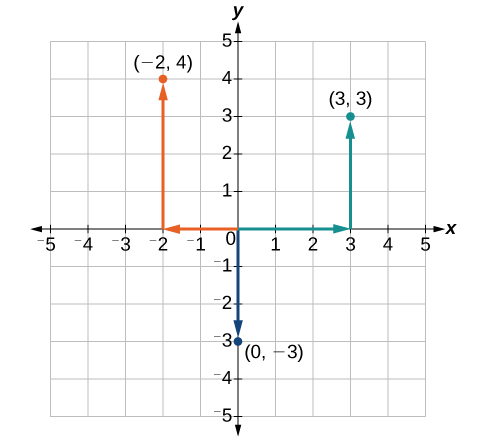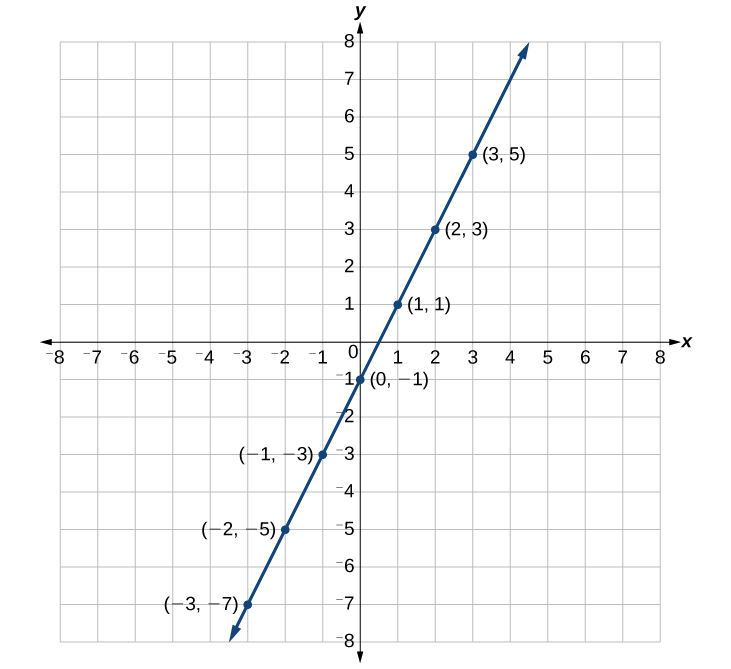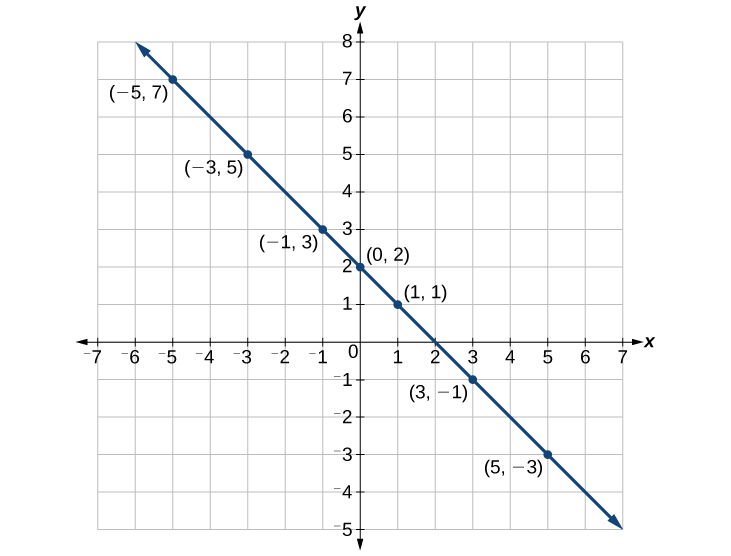| << Chapter < Page | Chapter >> Page > |
A two-dimensional plane where the
A point in the plane is defined as an ordered pair, such that x is determined by its horizontal distance from the origin and y is determined by its vertical distance from the origin.
Plot the points and in the plane.
To plot the point begin at the origin. The x -coordinate is –2, so move two units to the left. The y -coordinate is 4, so then move four units up in the positive y direction.
To plot the point begin again at the origin. The x -coordinate is 3, so move three units to the right. The y -coordinate is also 3, so move three units up in the positive y direction.
To plot the point begin again at the origin. The x -coordinate is 0. This tells us not to move in either direction along the x -axis. The y -coordinate is –3, so move three units down in the negative y direction. See the graph in [link] .

We can plot a set of points to represent an equation. When such an equation contains both an x variable and a y variable, it is called an equation in two variables . Its graph is called a graph in two variables . Any graph on a two-dimensional plane is a graph in two variables.
Suppose we want to graph the equation We can begin by substituting a value for x into the equation and determining the resulting value of y . Each pair of x - and y -values is an ordered pair that can be plotted. [link] lists values of x from –3 to 3 and the resulting values for y .
We can plot the points in the table. The points for this particular equation form a line, so we can connect them. See [link] . This is not true for all equations.

Note that the x- values chosen are arbitrary, regardless of the type of equation we are graphing. Of course, some situations may require particular values of x to be plotted in order to see a particular result. Otherwise, it is logical to choose values that can be calculated easily, and it is always a good idea to choose values that are both negative and positive. There is no rule dictating how many points to plot, although we need at least two to graph a line. Keep in mind, however, that the more points we plot, the more accurately we can sketch the graph.
Given an equation, graph by plotting points.
Graph the equation by plotting points.
First, we construct a table similar to [link] . Choose x values and calculate y.
Now, plot the points. Connect them if they form a line. See [link]


Notification Switch
Would you like to follow the 'College algebra' conversation and receive update notifications?